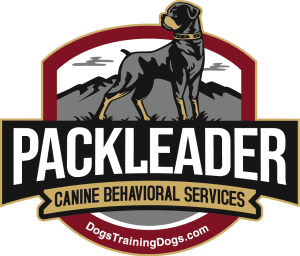What is Littermate Syndrome?
Littermate syndrome (sometimes called littermate aggression or sibling aggression) is a term trainers use to describe behavior issues that can develop when two puppies of similar age are raised together in the same home. Problems often show up as the dogs mature and can include over-dependence, separation distress, reduced focus on people, and escalating conflict between the dogs.
What are some signs of Littermate Syndrome?
One dog becomes shy, withdrawn, or overly reliant on the other
One dog becomes controlling, pushy, or reactive
Both dogs struggle to relax when separated
The dogs ignore people or have trouble training individually
Play escalates into growling, guarding, or sudden fights
Fights increase as the dogs reach social maturity
Can littermate syndrome be cured?
Many dogs improve significantly with consistent separation routines, structured individual training, and careful reintroduction. Outcomes depend on the dogs’ age, the severity of conflict, and whether the home plan is followed consistently.
Littermate Syndrome Treatment Program
This program is designed for two dogs raised together, including siblings and dogs close in age. It is built to reduce conflict, strengthen independence, and create calmer routines at home.
Our Littermate Syndrome Treatment Plan combines our proven, all-natural, and scientifically grounded Pack Dynamic Training Method with our Pack Cohesion Therapy Plan. These two approaches work in powerful synergy and have consistently shown strong results when applied together in this specialized program.
In truth, we’ve successfully handled numerous Littermate Syndrome cases each year—even without formally advertising a dedicated service.
Enrollment in our Littermate Syndrome Treatment Program requires a long-term commitment to working closely with our team—and, more importantly, a willingness to make meaningful changes at home. This level of dedication is essential for achieving success, allowing both sibling-mates not just to survive—but to truly thrive.
- Designed for two sibling puppies or young dogs raised together, including littermates or similar-age dogs
- Addresses conflict, over-dependence, separation distress, and escalating aggression
- Includes two board and train stays and up to three in-home sessions, based on your plan
- Step-by-step home handling plan and structured reintroduction process
- Ongoing support after the program
- Rates vary by service area
Littermate Syndrome - A Trainer's Perspective
Getting two dogs at the same time may seem like a great idea. Dogs are social animals, and a single dog left alone all day can become anxious or turn to destructive behavior. Two puppies, in theory, can keep each other company and stay entertained. So what’s the problem with bringing home two puppies at once?
As professional trainers, we strongly recommend against bringing home two puppies of similar age—especially from the same litter. While the idea may sound practical, in reality, it often leads to heartache, frustration, and in many cases, serious behavioral or aggression issues.
Beyond the obvious challenges—double the food and vet bills, and twice the effort in house training—there’s a much deeper developmental concern. A puppy’s brain continues to grow and mature until sexual maturity (and even a bit beyond), and credible research shows that raising two puppies together can prevent one or both from reaching their full behavioral potential.
One of the most revealing studies on this issue comes from a surprising but highly credible source: Guide Dog Organizations.
In an effort to increase their training output, one organization tested placing two puppies in the same foster home. Since their puppies are behaviorally screened and tracked from birth, it offered a unique opportunity to study long-term outcomes.
What they discovered was startling:
Placing two puppies in the same household consistently caused at least one to become temperamentally unsuitable for guide work—even when both started as ideal candidates.
Why? Because the puppies bonded too deeply to each other. One would inevitably become shy, even if both started out confident. This level of dependence prevented proper social and emotional development. The problem was so severe, the experiment was abandoned—and to this day, Guide Dog Organizations only place one puppy per home, no matter how experienced the foster family.
Other serious and heartbreaking effects of Littermate Syndrome:
- One puppy becomes increasingly shy, withdrawn, and underdeveloped.
- The “bold” puppy may become anxious or insecure when separated.
- Both dogs may develop extreme co-dependence, showing high anxiety when apart.
- The puppies often fail to bond properly with their human family.
- As they reach social maturity, serious and sometimes violent fighting can occur.
It’s important to note that Littermate Syndrome can also occur in non-sibling puppies raised together if they are too close in age.
That’s why most professionals advise not to adopt two puppies within six months of each other. The behavioral risks are just too high—even before considering the added cost, time, and training effort.
Can littermate syndrome be prevented?
In theory, yes—but in practice, it’s extremely difficult. Even highly experienced guide dog trainers weren’t able to consistently prevent it.
At a bare minimum, the two puppies would need to be crated, trained, walked, and socialized completely separately. They would need more time individually with their human caretakers than they have with each other—defeating the purpose of getting two for companionship.
Bottom Line: Puppies thrive when raised individually. If you want multiple dogs, consider adopting one puppy now and another after the first is fully developed. Alternatively, consider adding an adult dog instead.
